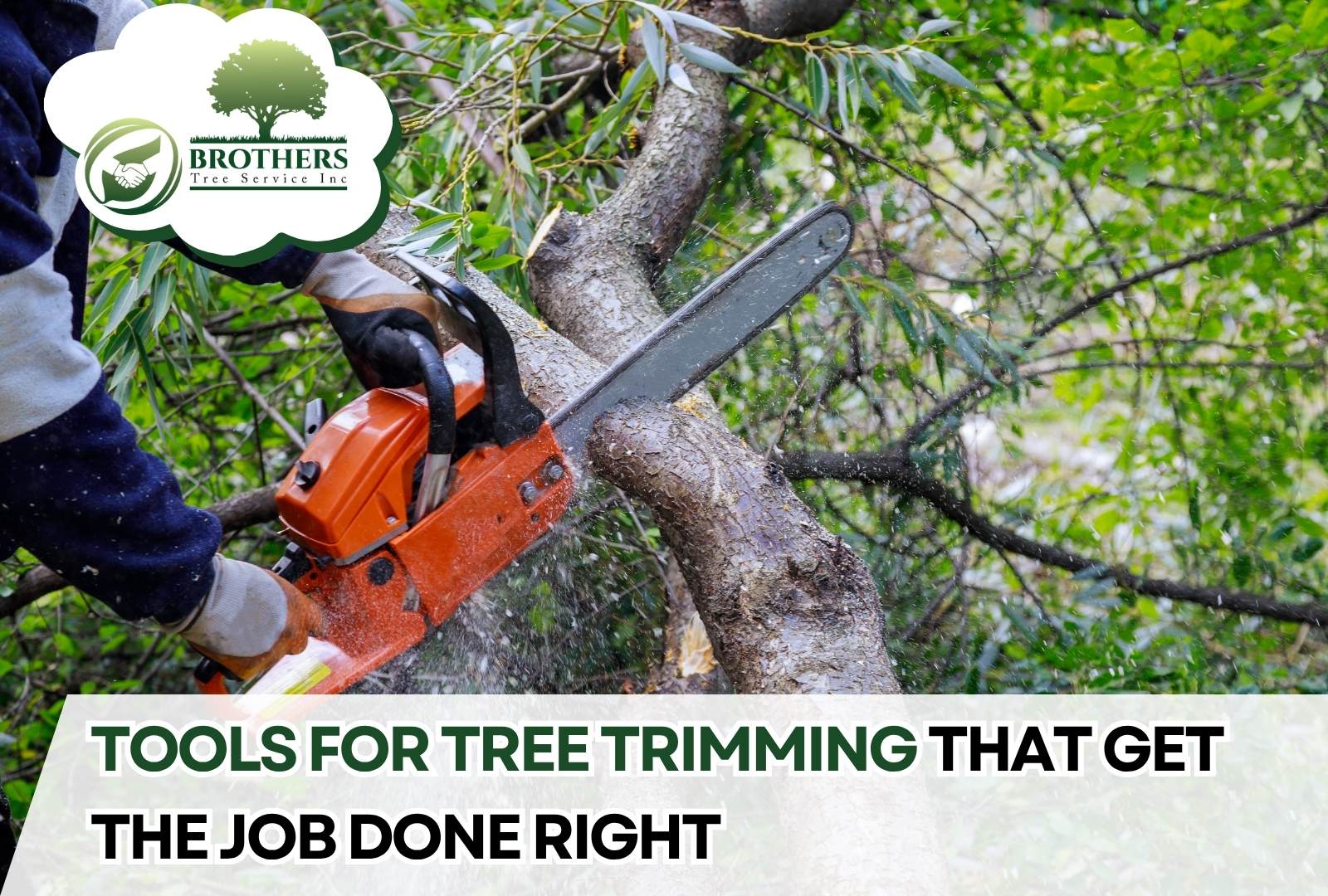
Using the right tools for tree trimming makes the job safer, easier, and more effective. Whether you’re shaping a small tree or removing dead limbs, proper equipment helps you make clean cuts that promote growth instead of causing damage.
At Brother’s Tree Service INC, we’ve seen how much better results can be when homeowners know how to trim a tree with the correct tools. This step-by-step guide covers the essential gear you need to prune confidently and correctly.
Why Tree Trimming Tools Matter
Clean Cuts Heal Faster
Sharp tools reduce tearing and splintering, which helps trees heal faster and lowers the risk of disease. Clean cuts protect the bark and support strong regrowth.
If you’re still wondering why technique matters, our article on why tree trimming is important explains the long-term benefits of doing it right.
Safer for You and the Tree
Dull or improper tools increase the chance of injury. Choosing the right equipment means less strain on your body and less damage to your trees.
Essential Tools for Tree Trimming
-
Hand Pruners
These are ideal for trimming small branches and shoots up to ¾ inch thick. Use bypass pruners for live branches and anvil-style pruners for dead ones.
-
Loppers
For branches up to 2 inches thick, loppers give you extra reach and cutting power. They’re great for shaping young trees and clearing out crossed limbs.
-
Pruning Saw
A curved pruning saw handles thicker branches with ease. Use it for cutting limbs between 2 and 5 inches in diameter.
Explore our tree trimming techniques to match the right tool with the right job.
-
Pole Saw or Pruner
These help you reach higher branches without a ladder. Many pole saws are manual, but some come in electric or gas-powered versions for heavier work.
Tips on How to Trim a Tree Using These Tools
Before you cut, examine the tree and mark which branches need to go—usually those that are dead, crossing, or growing inward.
- Always cut just outside the branch collar for proper healing.
- Don’t remove more than 25% of the canopy in one season.
- Clean your tools before and after trimming to prevent the spread of disease.
For a full walkthrough, our tree trimming guide outlines step-by-step instructions.
Maintenance and Safety Reminders
Even the best tools need upkeep:
- Keep blades sharp and clean
- Oil moving parts regularly
- Store tools in a dry place
Avoid using power tools on ladders or in windy conditions. If you feel unsure about reaching high branches, it’s best to hire a professional.
FAQs – Tools for Tree Trimming
What’s the most important tool for tree trimming?
Bypass pruners and a pruning saw are essential for most homeowners. These handle 90% of typical
trimming tasks safely.
Can I use hedge trimmers on trees?
Hedge trimmers are not recommended for tree branches. They don’t provide precise cuts and can damage live limbs.
How do I clean pruning tools?
Use soap and water to remove sap and debris. Disinfect with rubbing alcohol or a bleach solution to kill bacteria or fungi.
Trim Smarter with the Right Tools
Trimming trees doesn’t require expensive gear, but having the right tools makes all the difference. Brother’s Tree Service INC can help you choose or use them properly—or do the trimming for you with professional-grade equipment.
Start your project with our tree trimming guide or contact us for expert service.
